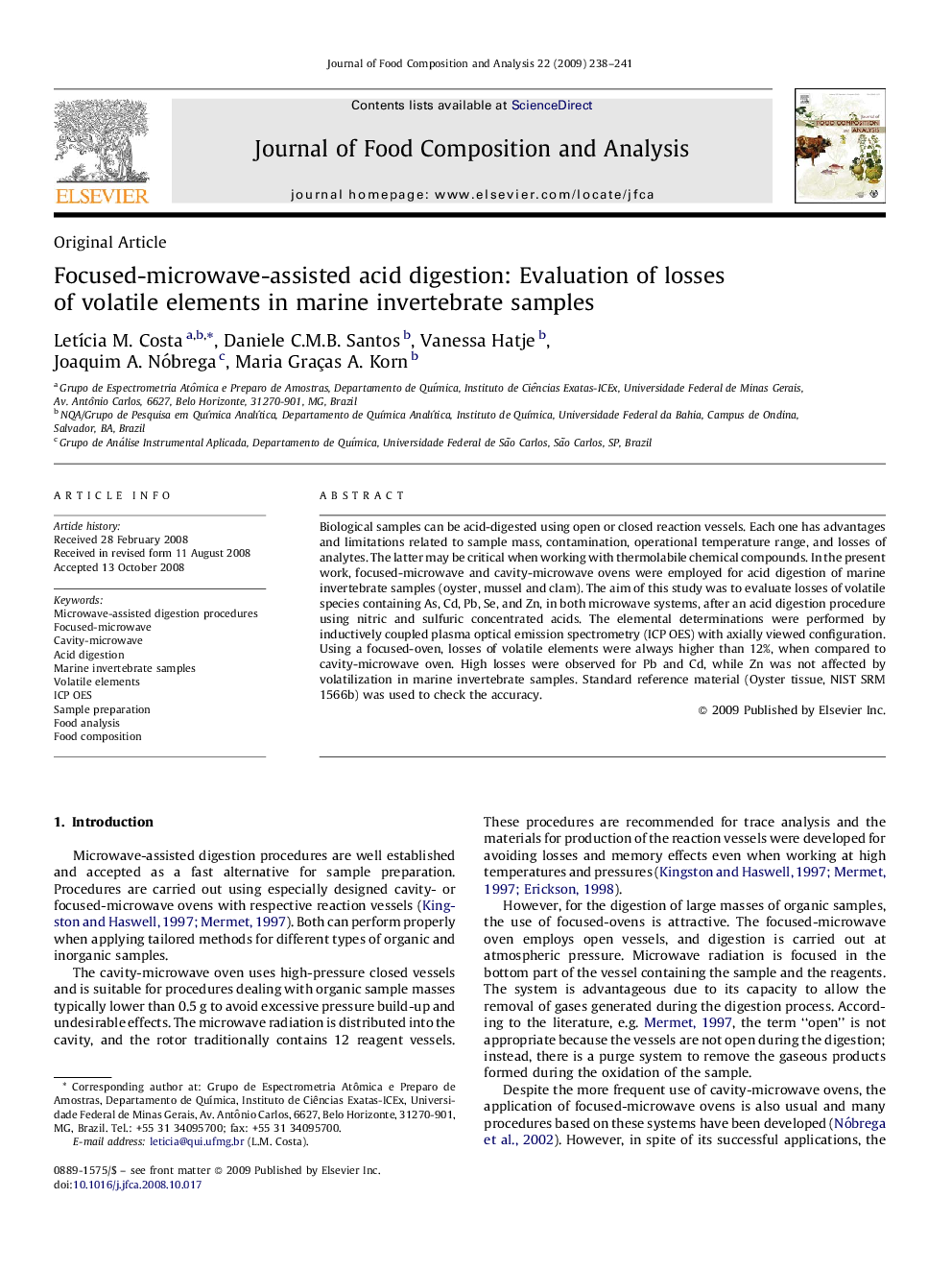| Article ID | Journal | Published Year | Pages | File Type |
|---|---|---|---|---|
| 1218822 | Journal of Food Composition and Analysis | 2009 | 4 Pages |
Biological samples can be acid-digested using open or closed reaction vessels. Each one has advantages and limitations related to sample mass, contamination, operational temperature range, and losses of analytes. The latter may be critical when working with thermolabile chemical compounds. In the present work, focused-microwave and cavity-microwave ovens were employed for acid digestion of marine invertebrate samples (oyster, mussel and clam). The aim of this study was to evaluate losses of volatile species containing As, Cd, Pb, Se, and Zn, in both microwave systems, after an acid digestion procedure using nitric and sulfuric concentrated acids. The elemental determinations were performed by inductively coupled plasma optical emission spectrometry (ICP OES) with axially viewed configuration. Using a focused-oven, losses of volatile elements were always higher than 12%, when compared to cavity-microwave oven. High losses were observed for Pb and Cd, while Zn was not affected by volatilization in marine invertebrate samples. Standard reference material (Oyster tissue, NIST SRM 1566b) was used to check the accuracy.
